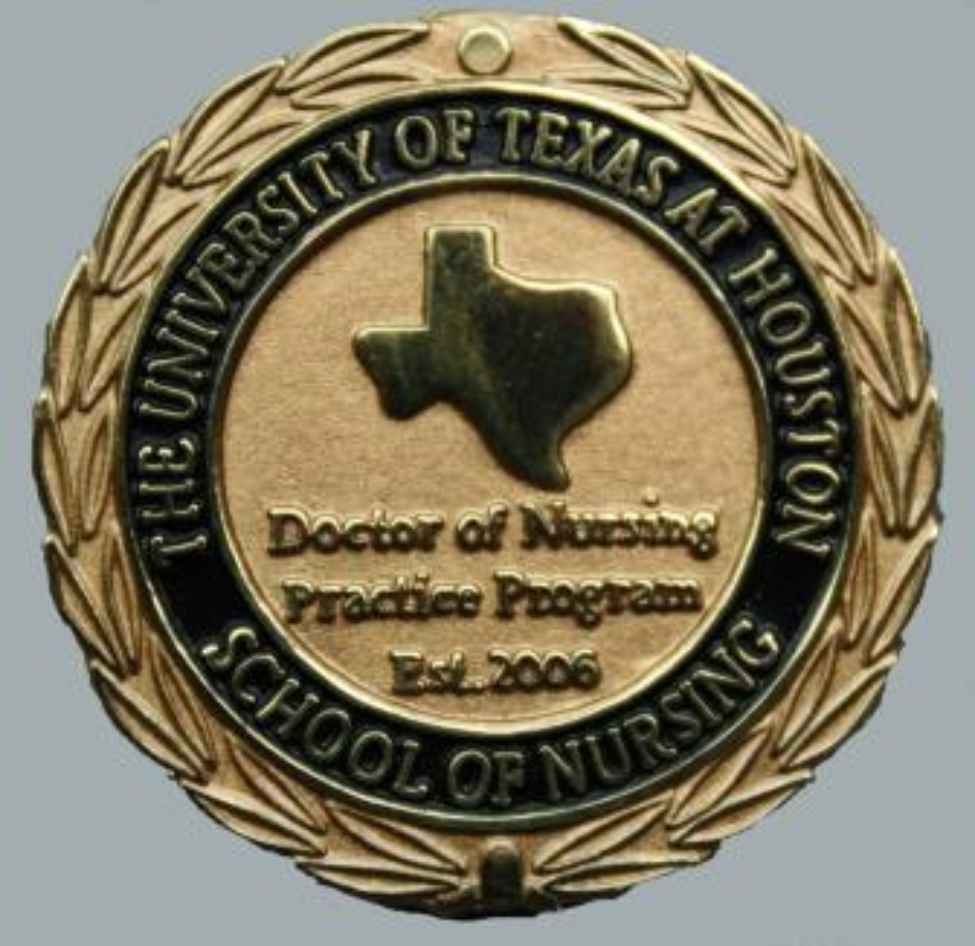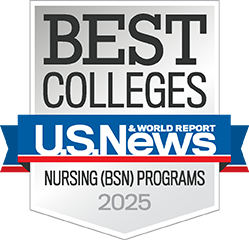2000s
Excelling in the digital age



High technology and high waters left their marks on Houston in the first decade of the new millennium. Cizik School of Nursing embraced the digital age within its new building designed specifically for nursing education, responded with a nurse’s caring heart when disaster struck, and through it all, enhanced its educational and research programs.
The COVID-19 pandemic may have made Zoom calls commonplace, but in the year 2000, the ability to facilitate “distance learning” via real-time video and two-way communication required significant expense, equipment, and technological savvy. Cizik School of Nursing began employing such tools to reach students studying remotely in the 1990s and thoughtfully integrated video conferencing capabilities throughout its new building that opened in 2004.
The state-of-the-art technology in the nursing school’s new home could be overwhelming at times. Professor Vaunette Fay, PhD, FNP, was assistant dean for e-learning and educational technology and worked closely with Janet Johnson, director of the Center for Education and Information Resources, to help faculty make the most of the new tools.
The internet transformed education and exponentially expanded the ability to store and share data. In the first half of the decade, the nursing school worked with the Texas Medical Center Library to pilot a digital document repository. Among the first additions to the Digital Commons were the scholarly works of Nancy Bergstrom, PhD, RN, FAAN.
Lorraine Frazier, PhD, RN, FAAN, then a postdoctoral fellow, served as the project director of Texas Medical Center Genetics (TexGen Research), an early biobank collaboration of several institutions within the TMC. The center collected clinical data and biological samples from people being treated for cancer and cardiovascular diseases. The steadily increasing power, storage capacity, and connectivity of computer technology enabled more efficient digitization of vast amounts of patients’ genetic data. Today, Cizik School of Nursing manages The University of Texas System Health Biobank Consortium under the direction of Associate Professor Jennifer S. Beauchamp, PhD, RN, FAAN.
Research at the nursing school grew and expanded on multiple fronts in the early 2000s. The $2.2 million grant that Professor Sharon Ostwald, PhD, RN, received from the National Institute for Nursing Research in 2001 to study stroke survivors and their spouses represented the largest award the school had received up until that date.
The late Professor Emerita Marianne Marcus, EdD, RN, FAAN, a much-loved faculty member who joined the nursing school in 1980, also had received a substantial federal grant by mid-decade. Along with Patricia Liehr, PhD, RN, and a few other faculty members, Marcus became interested in mindfulness meditation and applied it to her work with patients recovering from substance use. Marcus received a $1.4 million grant from the National Institute on Drug Abuse to apply these concepts at Cenikor, a two-year drug recovery program with which she had a long-established working relationship.
In addition, the nursing school played an important role in securing National Institutes of Health funding in 2006 to establish the Center for Clinical and Translational Sciences. Nursing faculty and researchers served in various leadership roles, and Frazier became director of the center’s biobank core.
Underpinning scientific advancements at the nursing school was the critical expansion of its doctoral programs. The establishment of the state’s first Doctor of Nursing Practice program in 2006 prepared graduate students focused on providing high-quality health care, influencing policy, and creating positive changes in health care systems. The following year, thanks in large part to the efforts of Mara Baun, PhD, FAAN, the school’s Doctor of Science in Nursing degree that was established in 1996 became a Doctor of Philosophy (PhD) in Nursing.
These high-water marks of education and discovery in the ’00s were achieved despite a series of literal and unforgettable high-water events along the Gulf Coast region. When Tropical Storm Allison dropped three feet of rain on Houston in June 2001, the nursing school shut down for two days but escaped flooding that devastated other parts of the TMC.
Four years later, UTHealth Houston set up a medical clinic in the George R. Brown Convention Center to care for the thousands of evacuees arriving in Houston from New Orleans and other Gulf Coast communities that were flooded and wind-battered by Hurricane Katrina. Volunteer nurses arrived from all across the nation to help, and Cizik School of Nursing Professor Elda Ramirez, PhD, ENP-BC, FAAN, and Susan Parnell, PhD, MPH, MSN, RN, supervised what may have looked like carefully controlled chaos.
“This was an unbelievable collaborative effort,” said Ramirez, track coordinator for emergency/trauma care. Parnell retired in 2020 as director of UT Health Services after working in the nurse-managed clinic for 25 years.
Almost as quickly as it had been set up, the clinic was broken down three weeks later. With Hurricane Rita approaching, the Katrina evacuees were relocated to other cities, and millions of people clogged highways leading out of Houston. Rita’s track ultimately spared the city but inflicted damage along the Texas/ Louisiana border. In response, the school accepted five displaced nursing students from that region.
Cizik School of Nursing had much to celebrate by the end of the decade. In 2009, the first DNP cohort graduated, Dean Emerita Patricia L. Starck, PhD, RN, FAAN, was honored for 25 years of service, and U.S. News & World Report rankings put the school in the top 5% of nursing schools in the nation. To help meet the ever-increasing need for nurses, the school was set to begin two new programs in the fall of 2010 – the Pacesetter BSN program and the Patricia L. Starck Accelerated PhD Scholars Program, for which $2 million in philanthropic support had been raised.
2001
- U.S. News & World Report ranks the school’s MSN program among the top 12% in the nation.
- Tropical Storm Allison floods the TMC, June 8-9.
2002
- Adult Health Nursing Program is established.
- 30 graduates are honored as Distinguished Alumni in honor of the school’s 30th anniversary.
2004
- The Center for Substance Abuse Prevention, Education and Research is founded.
- The new $57 million School of Nursing and Student Community Center, 6901 Bertner Avenue, celebrates its grand opening.
2005
- The school opens the first biological sciences “wet” laboratory in a Texas nursing school.
- Hurricanes Katrina and Rita cause tremendous devastation along the Gulf Coast. UTHealth Houston operates a comprehensive 24-hour emergency health clinic in the George R. Brown Convention Center.
- Nurse Leadership and Administration Program is established.
2006
- The DNP program is established.
- The PARTNERS endowment reaches $1 million in funding. The first PARTNERS Professorship is established.
2007
- The Pre-Clinical Critical Care Laboratory is constructed.
- The title of the Doctor of Science in Nursing degree changes to the Doctor of Philosophy in Nursing. Previous doctoral graduates could request reissue of their diplomas.
- A time capsule is installed in the staircase leading from the café to the bookstore as part of the school’s 35th anniversary celebration.
2009
- $2 million in gift funding is secured for a new Accelerated PhD Program.
- In May, the school graduates the state’s first nine students ever to earn the DNP degree.
- The building is awarded LEED® Gold certification by the U.S. Green Building Council.


